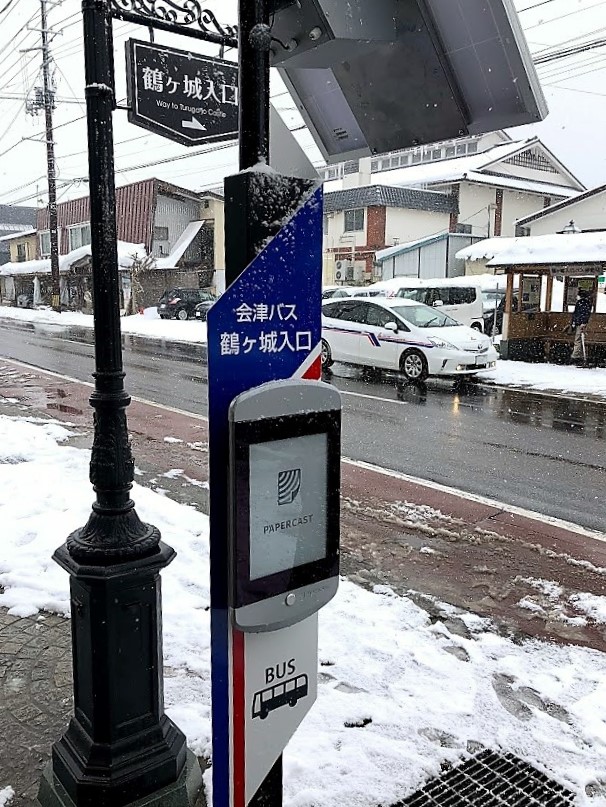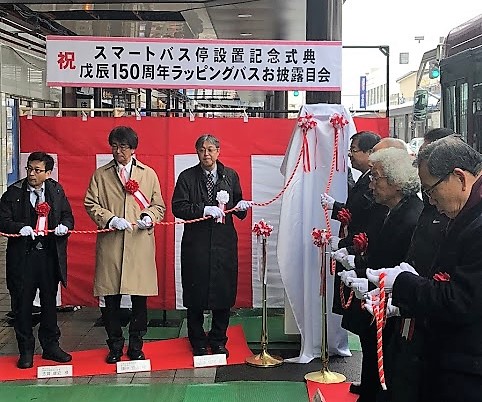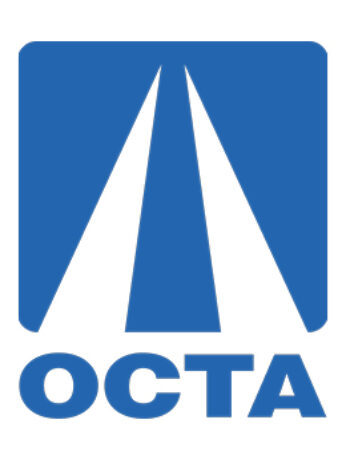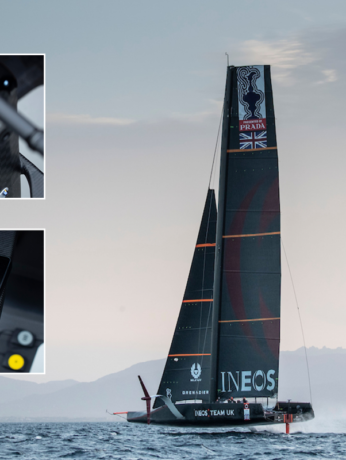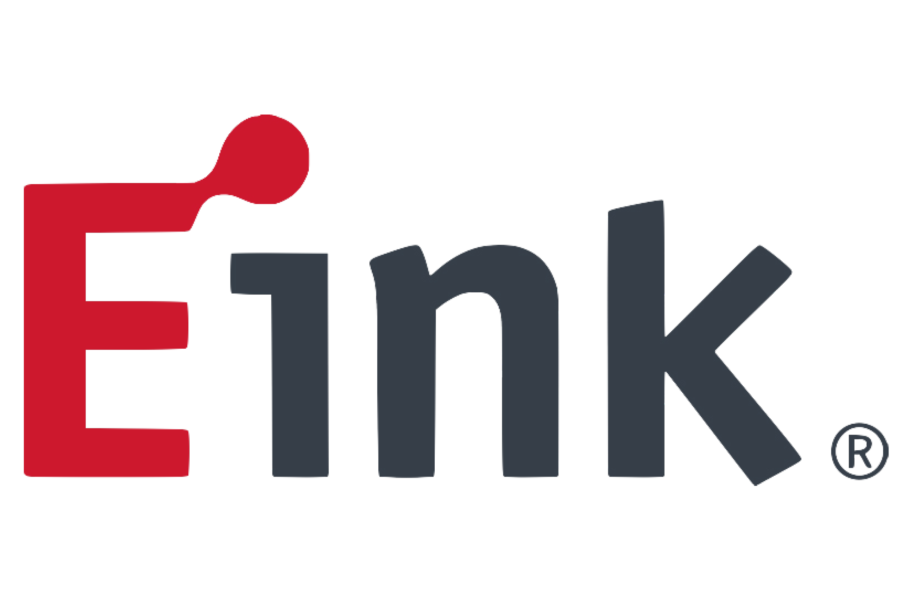
Key features
Aim to improve service convenience and reduce ongoing costs
By replacing paper timetables with digitally connected bus stops
E-paper was selected by the consortium as the preferred technology
E Ink recommended Papercast’s solar powered, wireless bus stop display technology
Meets the requirement for an off-the-grid, cost effective real-time passenger information solution
E Ink Holdings partnered with Papercast to supply a solar powered e-paper passenger information display technology for a pioneering smart bus stop project, soon to pilot in Aizuwakamatsu city, Japan. The project is administered by the consortium Aizu Riding Car Development.
Overview
The Aizu Riding Car Development is a consortium initiated by Michinori Holdings, operator of the Aizuwakamatsu bus service, Aizu Bus. Michinori is working alongside NAVITIME, KDDI Corporation, Toppan and Weathernews Corporation.
Background
The purpose of the consortium is to improve service convenience and reduce ongoing costs by digitally connecting bus stops. It will see the replacement of traditional paper signage with real-time passenger information on electronic displays. In Japan, there are 500,000 bus stops nationwide, and nearly 90% have no power supply – making an off-the-grid, cost effective installation a prerequisite in this project.
Solution
E-paper was selected by the consortium as the preferred technology and by partnering with E Ink, Papercast’s solar powered, wireless bus stop display technology was used. By combining E Ink low power display technology with low power, wide area (LPWA) wireless technology, the bus stop displays can be easily installed using solar power only – without power and network cables.
Managed remotely through the Papercast data management platform, the multi-lingual displays will present live bus arrivals, timetables, route data, route transfers, service alterations (planned and unplanned) and a range of other travel advice.
Outcomes
“E-paper works just like paper with sunlight readability and high contrast, with the added benefit of real time updates, making it an ideal information display for bus stops. Since E Ink’s electronic ink is bistable, meaning the display consumes power only when the image or content changes, it is the perfect display to run on solar cells,” said Dr. FY Gan, Executive Vice President of Sales Center of E Ink Holdings.
“It is expected that this will facilitate widespread fulfilment across the bus network in the future, therefore benefitting more users and helping to boost service adoption,” comments Rado Skender, Director of Business Development at Papercast.
“E Ink’s goal is to deliver revolutionary products, user experiences and environmental benefits through advanced technology development. We are glad to co-work with Papercast and the value chain to enable this new application.”
Dr. FY Gan, Executive Vice President of Sales Center of E Ink Holdings
